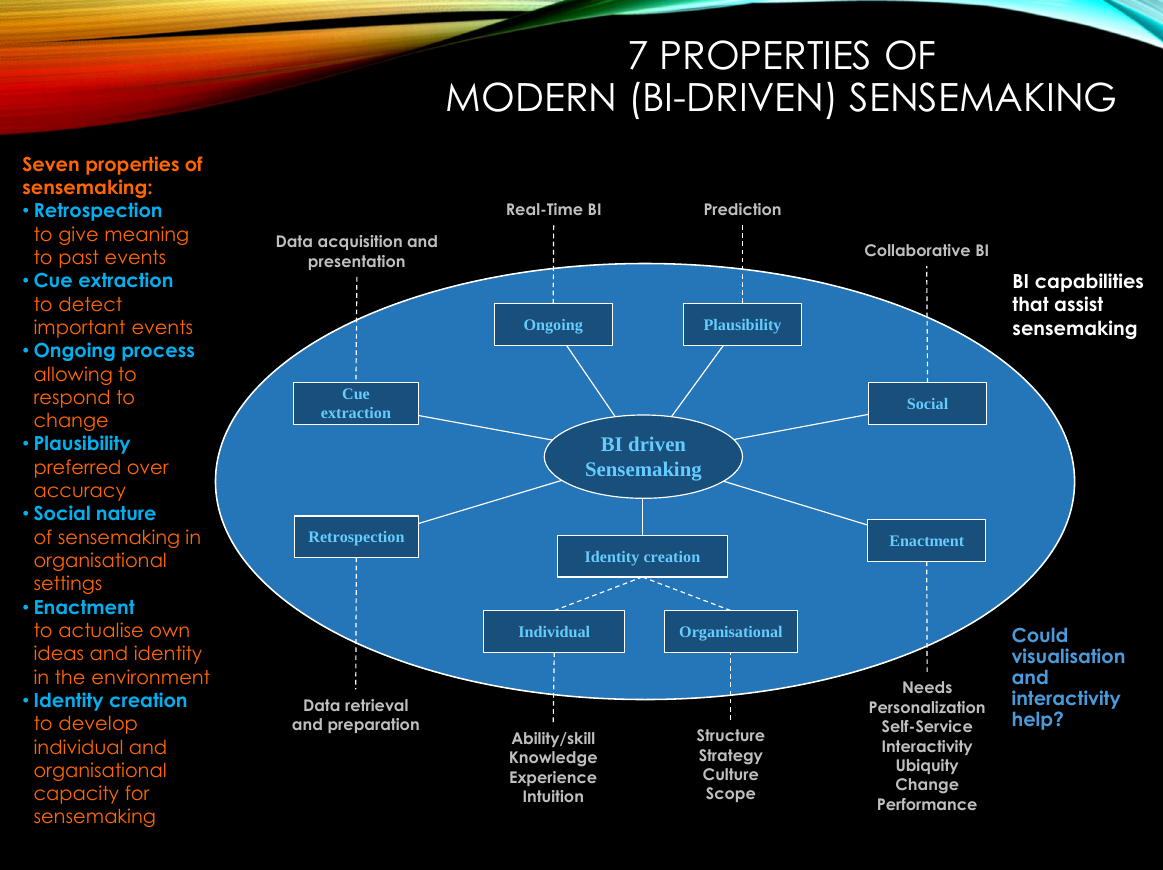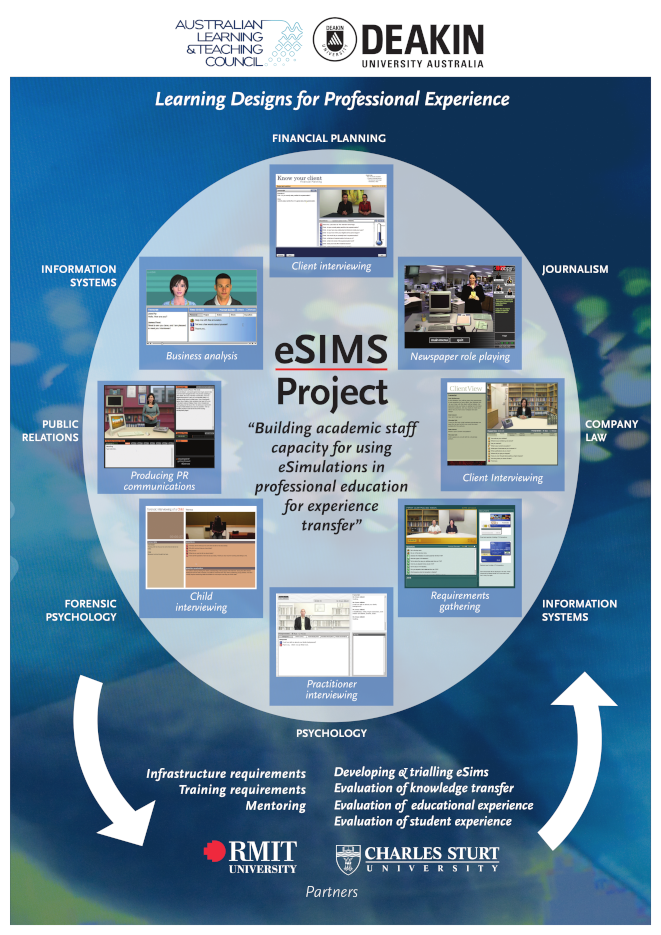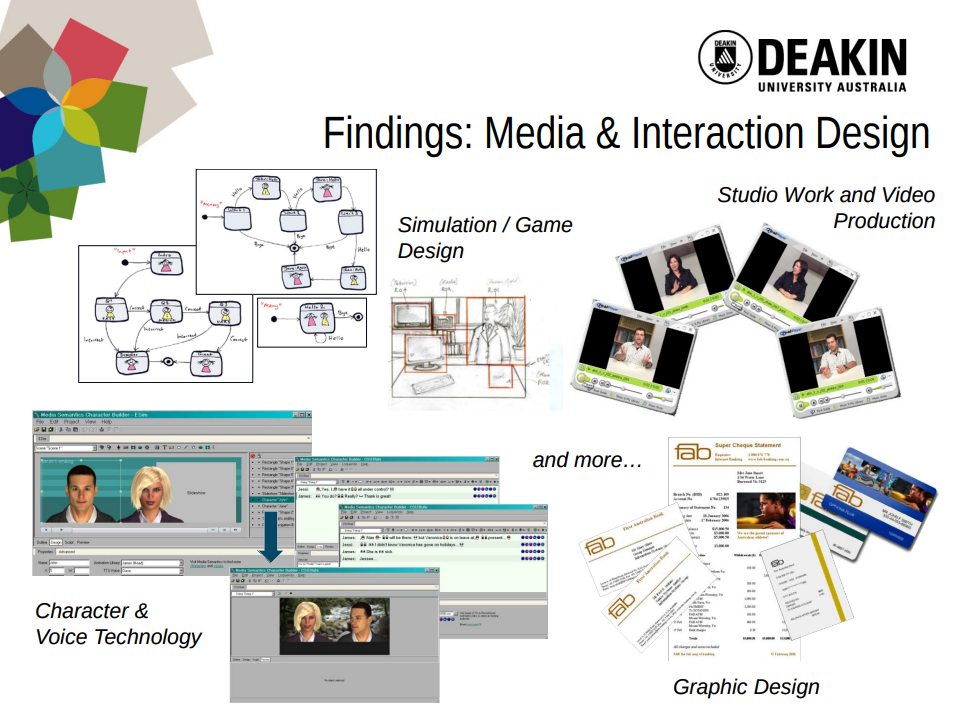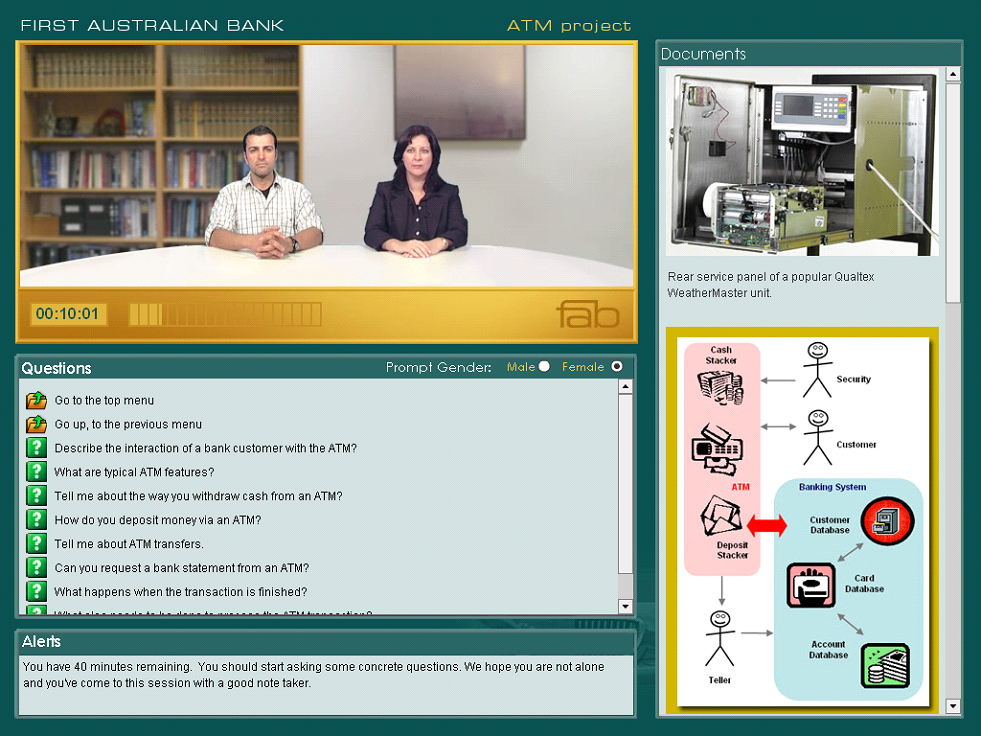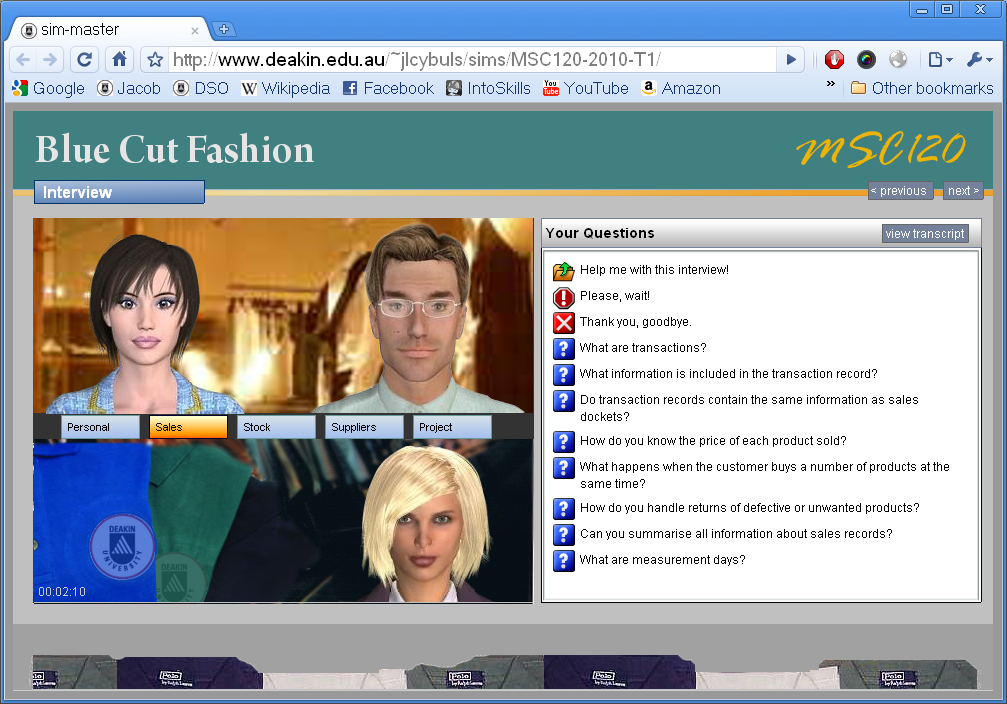Current Projects
- Project: Exploration of Barren Plateaus Mitigation Strategies on Variational Quantum Model Development
- Location: Deakin, School of IT
- Funding: Deakin, School of IT, Summer Scholarship
- Chief Investigator: Jacob Cybulski (Deakin SIT)
- Researcher Thanh (Tim) Nguyen
- Methods: Quantum Machine Learning, IBM Quantum, Qiskit
- Description:
Training of variational quantum models (VQM), such as quantum neural networks (QNN), is commonly affected by the emergence of barren plateaus (large flat areas in the loss function landscape), which impede the convergence of VQN parameter optimisation. Such training problems are known to be caused by large quantum circuits, poor initialisation of VQM parameters, or the selection of an inferior cost function. Fortunately, there are well established techniques of mitigating the formation of barren plateaus, such as: restricting the circuit depth, layerwise development of VQM circuits and a careful planning of the parameter initialisation process. While dealing with barren plateaus, their mitigation strategies are expected to have a positive impact on the VQM training, however, in some cases while training convergence improves the overall model performance degrades.
This project thus investigates an impact of barren plateaus mitigation strategy on the VQM development and its capacity to learn in particular, which can be measured by the network's effective dimension (local and global).
- Status: Implementation and experiments completed (Jan-Feb 2023), journal publications on-going (July 2023)
- Outcomes:
- Nguyen Ngo Cong Thanh and Jacob L. Cybulski (2023): "Investigation of Barren Plateaus in Quantum Neural Network Development." Presented at 10th International Congress on Industrial and Applied Mathematics (ICIAM 2023), Waseda University, Tokyo, Japan, August 20-25, 2023.
- Jacob L. Cybulski and Thanh Nguyen (2023): "Impact of Barren Plateaus Countermeasures on the Quantum Neural Network Capacity to Learn." Quantum Information Processing, 22, 442. Access via Springer Nature ShareIt Link.
- Thanh Nguyen and Jacob L. Cybulski (2023): "Training Variational Quantum Models with Barren Plateaus Mitigation Strategies." In Preparation for journal submission (Advanced Draft).
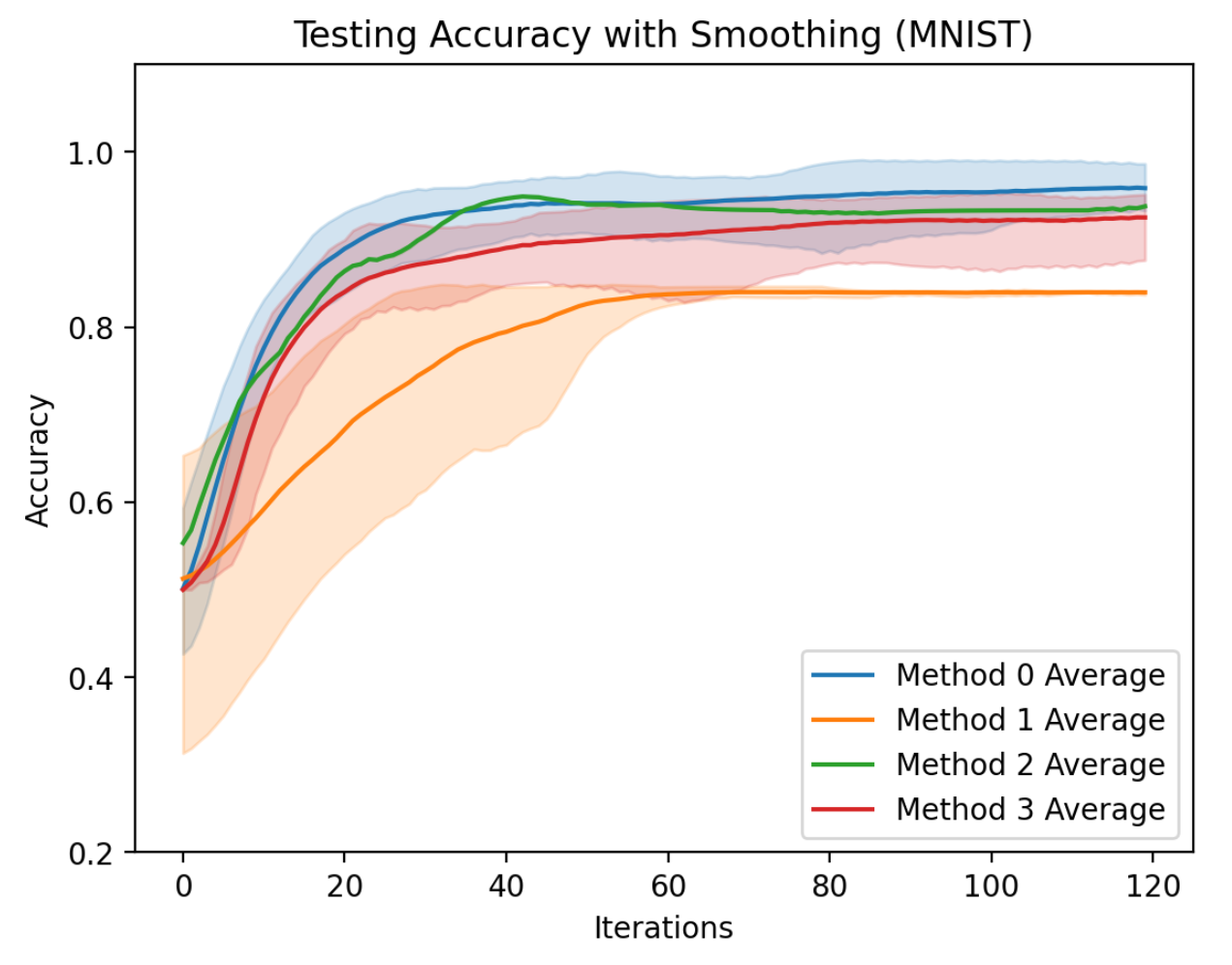
Figure. QNN training on MNIST data using four BP mitigation strategies (including ’method 0’ which implements the common practice to rely on deep circuits, global cost function and random initialisation) (Click image)
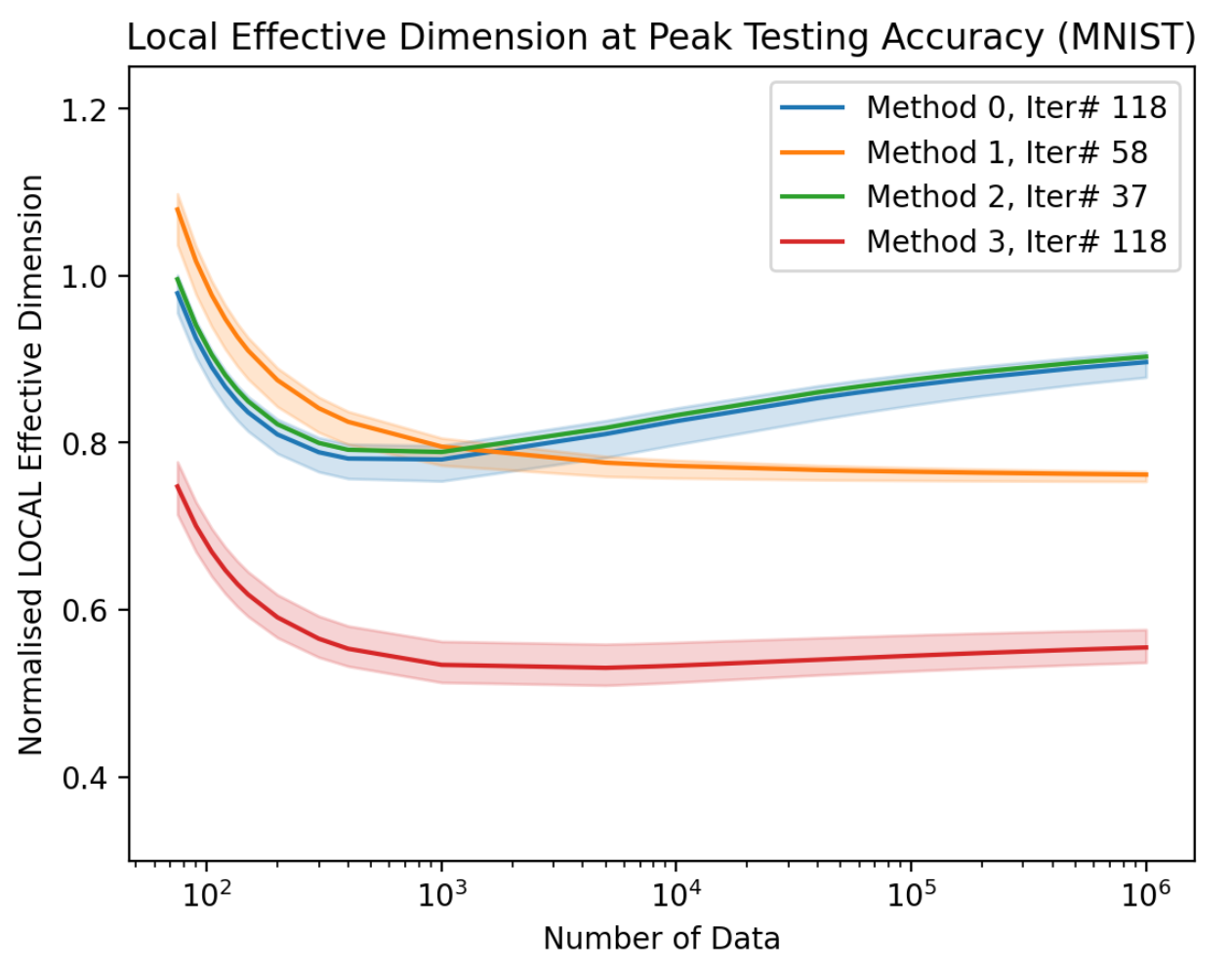
Figure. Resulting normalised local effective dimension (effective utilisation of each model parameter) for each strategy at peak test accuracy (Click image)
- Project: Quantum Anomaly Detection in Streaming Data
- Chief Investigator: Jacob Cybulski (Deakin SIT)
- Chief Investigator: Sebastian Zając (SGH Warsaw School of Economics / PKO Bank)
- Location: Deakin / SGH
- Research Methods: Quantum ML, Time Series Analysis, Anomaly Detection
- Description:
Time series anomalies have been investigated in a variety of different contexts, e.g. in assessing price volatility, when appraising financial risk, in cardiac patient monitoring, machine condition analysis, while conducting video surveillance or traffic monitoring, in observations of seismic activity or astronomical events. All such real-life examples involve streaming data, where the series are infinite and ongoing, data features are evolving over time, anomalies are infrequent, and yet they potentially lead to catastrophic outcomes.
Anomaly detection in streaming data is challenging, especially when new data are voluminous, multivariate, with complex time-state relationships, and generated in real-time, where anomaly detection must happen at the earliest possible time, their impact is to be assessed accurately, business decisions need to be made quickly and the ensuing actions taken instantly.
Traditional statistical and machine learning methods of detection and prediction of anomalies in data streams rely either on the prior analysis of the off-loaded volumes of streaming data or are limited to the real-time analysis of small segments of data immediately preceding the present event. They therefore lack in speed and completeness of data analysis.
This project therefore explores the use of novel quantum computing methods of early anomaly detection in streaming data. Quantum methods, whether pure or hybrid, commonly exceed the performance and effectiveness of classical approaches when dealing with highly complex problems. While targeting the future generation of quantum devices, featuring 1000s of high quality qubits, quantum methods will allow effective real-time analysis of all the past and current states of complex multivariate data streams. The project also aims to determine suitability of different quantum methods for the analysis of distinct types of anomalies in various circumstances.
- Status: Ongoing
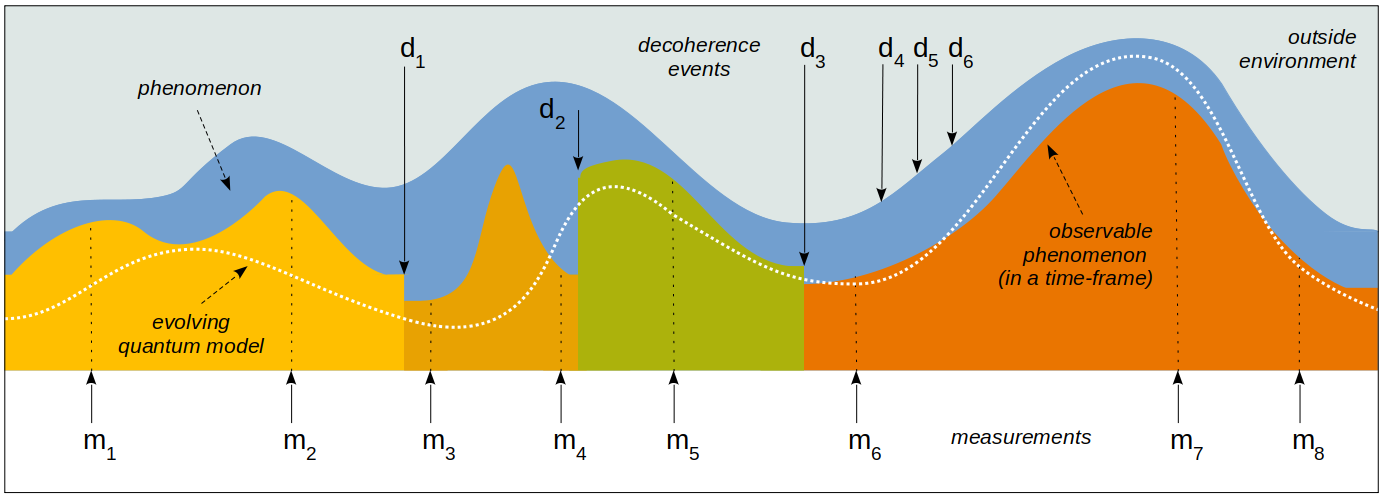
Figure. Anomalies in time series (Click image)
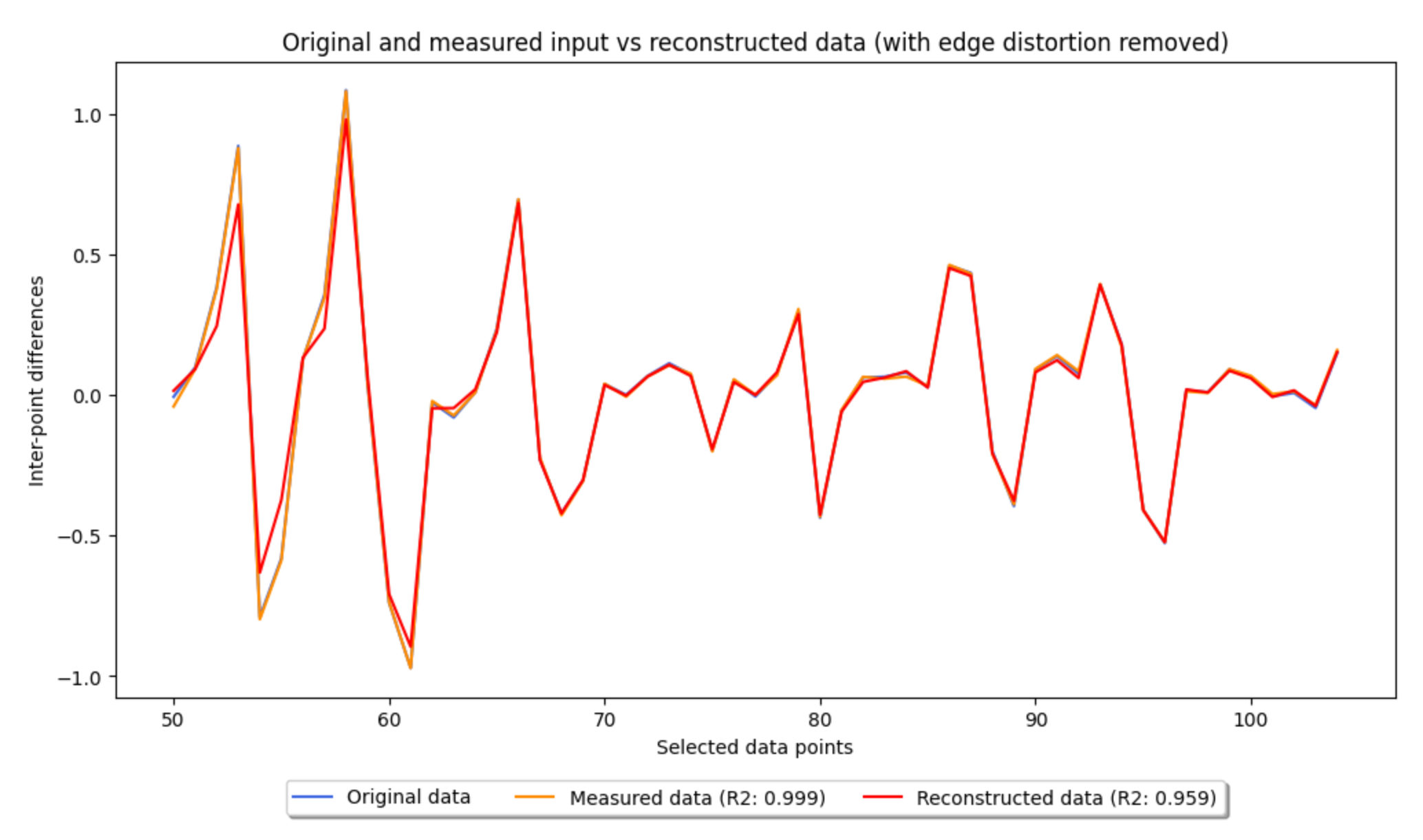
Figure. Beer sales time series reconstruction on 75% latent space (Click image)
Selected Projects
- Project: Investigation of Business Opportunities in Quantum Technology
- Chief Investigator: Jacob Cybulski (Deakin SIT)
- Location: Deakin University
- Research Methods: IBM Quantum, Qiskit, Delivered Seminars
- Description: Exploration of business applications of quantum computing and quantum machine learning methods and techniques. Active participation in quantum challenges, hackathons, conferences and seminars.
- Outcomes:
- Seminar - Jacob Cybulski, "Business Applications of Quantum Computing: Some Promises and Words of Caution" (Nov 2022), Part of Quantum Business Series, Department of Information Systems and Business Analytics, RMIT, Melbourne. (PDF)
- Seminar - Jacob Cybulski, "Business Applications of Quantum Computing: Opportunities and Challenges for Software Developers" (Sept 2022), Part of Quantum Business Series, Australian Computer Society, Melbourne.. (PDF)
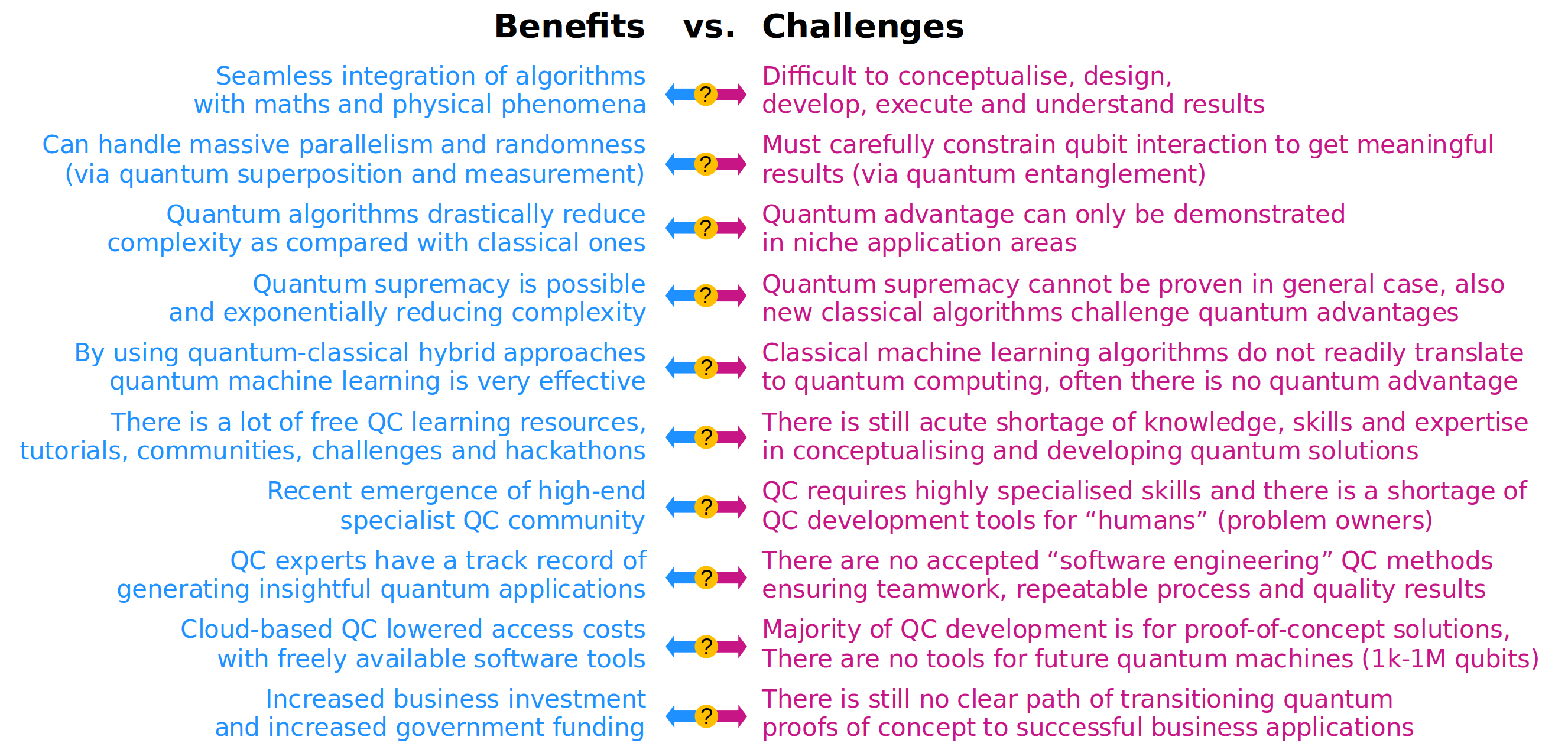
Figure. Quantum computing pros and cons for business (Click image)
- Project: Investigation of Data Science Impact on Organisations
- Chief Investigators: Jacob Cybulski (DISBA) and Rens Scheepers (DISBA)
- Location: Deakin University
- Research Methods: Theory Development, Literature Survey, Text Analytics
- Description:
The field of data science emerged in recent years, building on advances in computational statistics, machine learning, artificial intelligence and big data. Modern organizations are immersed in data and are turning towards data science to address a variety of business problems. While numerous complex problems in science have become solvable through data science, not all scientific solutions are equally applicable to business. Many data-intensive business problems are situated in complex socio-political and behavioral contexts that still elude commonly used scientific methods.
To what extent can such problems be addressed through data science? Does data science have any inherent blind spots in this regard? What types of business problems are likely to be addressed by data science in the near future, which will not, and why?
We develop a conceptual framework (DSOF) to inform the application of data science in business. The framework draws on an extensive review of data science literature across four domains: data, method, interfaces and cognition. We draw on Ashby’s Law of Requisite Variety as theoretical principle. We conclude that data-scientific advances across the four domains, in aggregate, could constitute requisite variety for particular types of business problems. This explains why such problems can be fully or only partially addressed, solved or automated through of data science. We distinguish between situations that can be improved due to cross-domain compensatory effects, and problems where data science, at best, only contributes merely to better understanding of complex phenomena.
The project developed a novel method of analysing large body of scientific text (such as article abstracts) using text analytics for automatic identification of domain concepts and their grouping to form a conceptual model of a given domain of discource.
- Outcomes:
- Jacob L. Cybulski and Rens Scheepers (2021): "Data science in organizations: Conceptualizing its breakthroughs and blind spots." JIT Journal of Information Technology. 36(2), pp 154-175.
- Seminar - Rens Scheepers and Jacob Cybulski (June 2021), "Mapping the Minds of Many: Methodological Principles for Analysing Large Bodies of the Research Literature through Unsupervised Text Analytics", DISBA, Burwood. (PDF)
- Seminar - Jacob Cybulski and Rens Scheepers (Oct 2020), "Data Science in Organizations: Conceptualising its Breakthroughs and Blind Spots", DISBA webinar series 4, Deakin Business School, Burwood. (PDF)
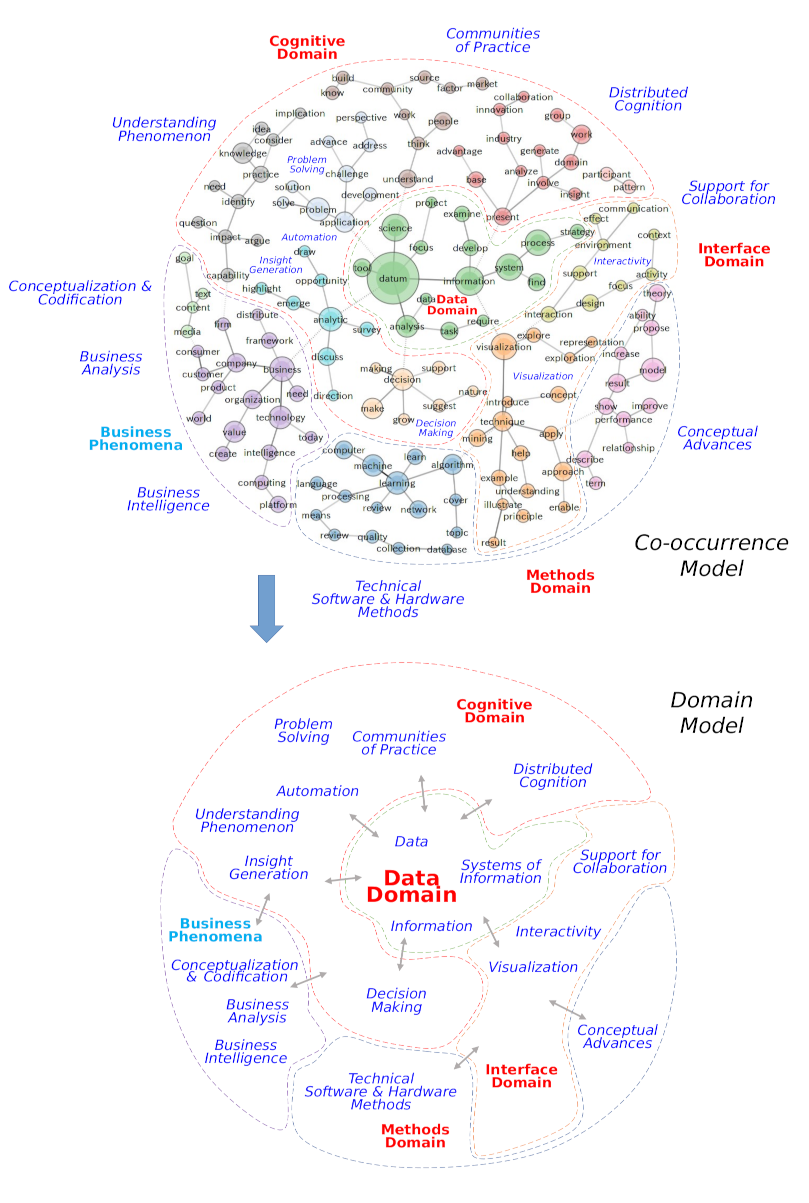
Figure. DSOF model of Data Science in Organizations (Click image)
- Project: Analysis of Brand and Product Interactions in Food Sales
- Program: part of Advanced Business Analytics Lab
- Funding: Deakin Business School
- Chief Investigators: Jacob Cybulski (DISBA)
- Collaborators: Kaushalya Nallaperuma (Marketing)
- Researchers: Anindya Chattopadhyay (Student), Van Nguyen (Student) and Noreen Mubayiwa (Student)
- Location: Deakin University
- Research Methods: Multivariate Time Series Analysis, Deep Learning, U-Shapelet Discovery
- Description:
This project investigates the relationships between food advertising and sales by employing Advanced Analytics techniques, such as Convolutional and LSTM Neural Networks, as well as u-Shapelets, which are used for data exploration, creation and evaluation of predictive models, as well as, clustering and segmentation analysis of brand behaviour.
Among the research objectives, the project focuses on the emergence, externalization and systemization of tacit aspects of observed phenomena, such as market events, relationships, processes and practices.
- Outcomes:
- Seminar - Jacob Cybulski, Van Nguyen and Chris Dubelaar (Oct 2019), "Brand Segmentation and the Analysis of Vendor Behavioural Patterns: Application of Unsupervised Shapelet Discovery to Sales Data", Deakin Business School, Burwood.(PDF)

Figure. Cluster analysis of products and brands based on discovered shapelets (Click image)
2012-2015
- Project: Enhancing collaborative learning in information systems business analytics using data visualisation and manipulation techniques
- Funding: Australian Government Office for Learning and Teaching (OLT) Competitive Grant ID12-2407
- Role: Project Co-Leader (with Marjanovic)
- Collaborators: Jacob Cybulski, Olivera Marjanovic (University of Sydney), Dineli Mather, Susan Keller, Dilal Saundage and Lasitha Dharmasena, Jaymee Owens, Alex Calladine and Konrad Cybulski
- Location: Deakin University and the University of Sydney
- Research Methods: Mixed Methods, including Multivariate Time Series Analysis, Reduced Shapelet Discovery
- Description:
Business Analytics (BA) refers to skills, methods and technologies that enable learners (undergraduate) to make swift, quality decisions based on large amounts of data generated and collected by their organisations. Given the pressures of modern management practice, business analytics has become the foundation for management and information systems courses despite the inherent complexity of its curriculum. It is slowly moving into the early years of the business curriculum, where low numeracy skills and the fundamental lack of business knowledge impede student learning of abstract concepts.
This problem can be addressed by structuring learning tasks to take advantage of students’ general world-knowledge, their intuitive approach to problem solving, their preference for learning by experimentation, and their eagerness to share personal experiences with peers.
This project developed a Visual Business Analytics Collaboratory – a web-based facility, shared and maintained by the two partner universities, and open to community learners, where 3D visualisation techniques and immersive interfaces allowed intuitive learning of Business Analytics.
The project was extended at the request of the funding body, to undertake further investigation into how immersive visual environments could be used by learning teams (postgraduate) to support complex collaborative decision-making through the analysis of intuitive 3D models of business data. While data and predictive analysis are commonly undertaken by well-trained analysts working behind the scenes, it is envisaged that visualisation of analytics, natural interfaces and large screen experience will support decision-making by executives themselves. In partnership with key industry players in business analytics, the project undertakes to create visualisation environments featuring natural data manipulation techniques, such as gestures, touch and speech.
This project also proposes a new method of analysing multi-participant collaboration using reduced shapelets in multivariate times series. The method is being applied to videos of experiments involving teams solving data analytics problems in virtual 3D data terrains.
- Outcomes:
- Project Report - Jacob Cybulski, Olivera Marjanovic, Dineli Mather, Susan Keller, Dilal Saundage, Lasitha Dharmasena and Judy Munro (2015): "Enhancing collaborative learning in information systems business analytics using data visualisation and manipulation techniques", Final report for project ID12-2407, Office for Learning and Teaching, Australia. (PDF), Achievement Statement (PDF).
- Dilal Saundage, Jacob L. Cybulski, Susan Keller and Lasitha Dharmasena (2016): "Teaching Data Analysis with Interactive Visual Narratives." Journal of Information Systems Education (JISE). 27(4), pp 233-245. (Abstract)
- Jacob Cybulski, Susan Keller and Dilal Saundage (2015): "Interactive exploration of data with visual metaphors." Int. J. of Software Engineering and Knowledge Engineering. 25(2) (March), pp 231-252. (Abstract)
- Jacob Cybulski, Susan Keller, Lemai Nguyen and Dilal Saundage (2015): "Creative problem-solving in digital space using visual analytics." Computers in Human Behavior, V42 (January), pp 20-35. (Abstract)
- Several seminars, e.g. Jacob Cybulski, Susan Keller and Dilal Saundage (Aug 2014), "Metaphors in Interactive Visual Analytics", Deakin University, School of Information and Business Analytics, Burwood. (PDF)
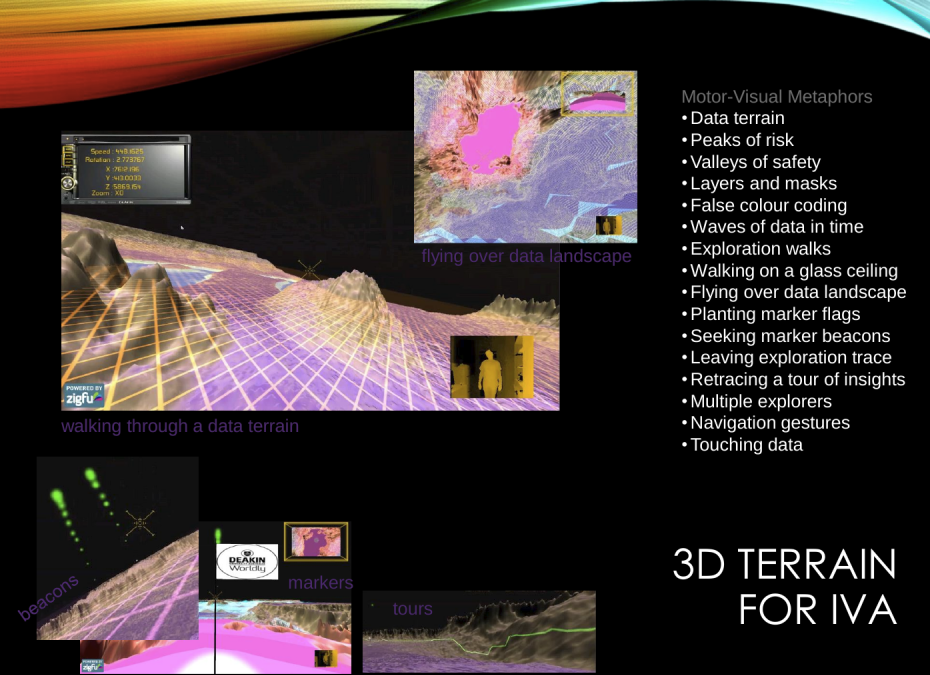
Figure. Metaphors used in data terrain (Click image)
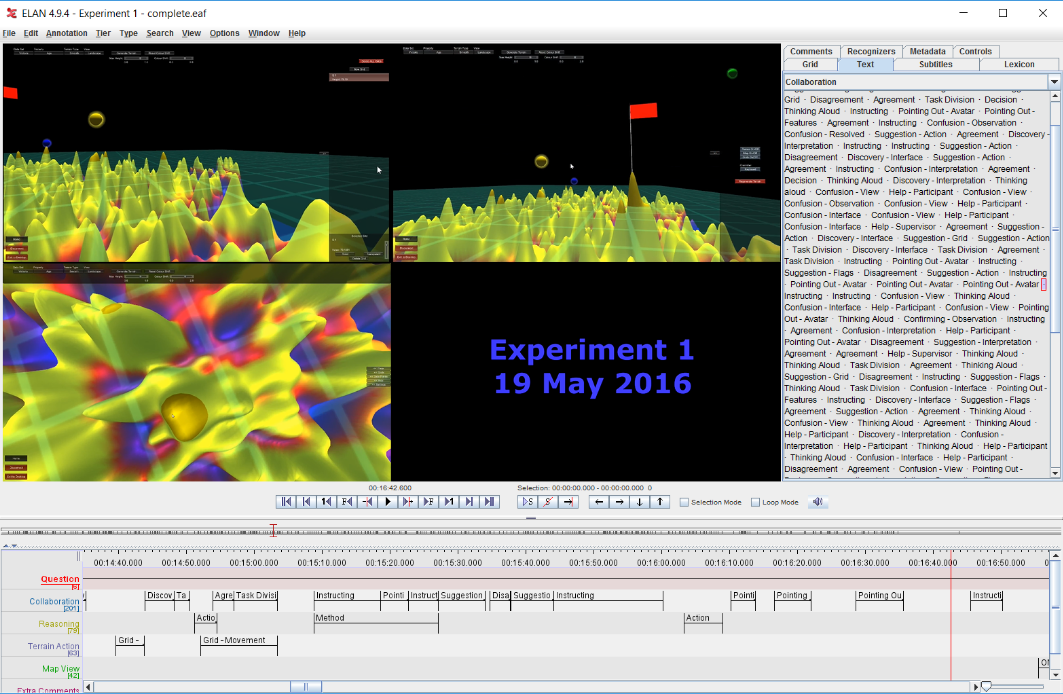
Figure. Coding of videos recorded from collaborative sessions (Click image)
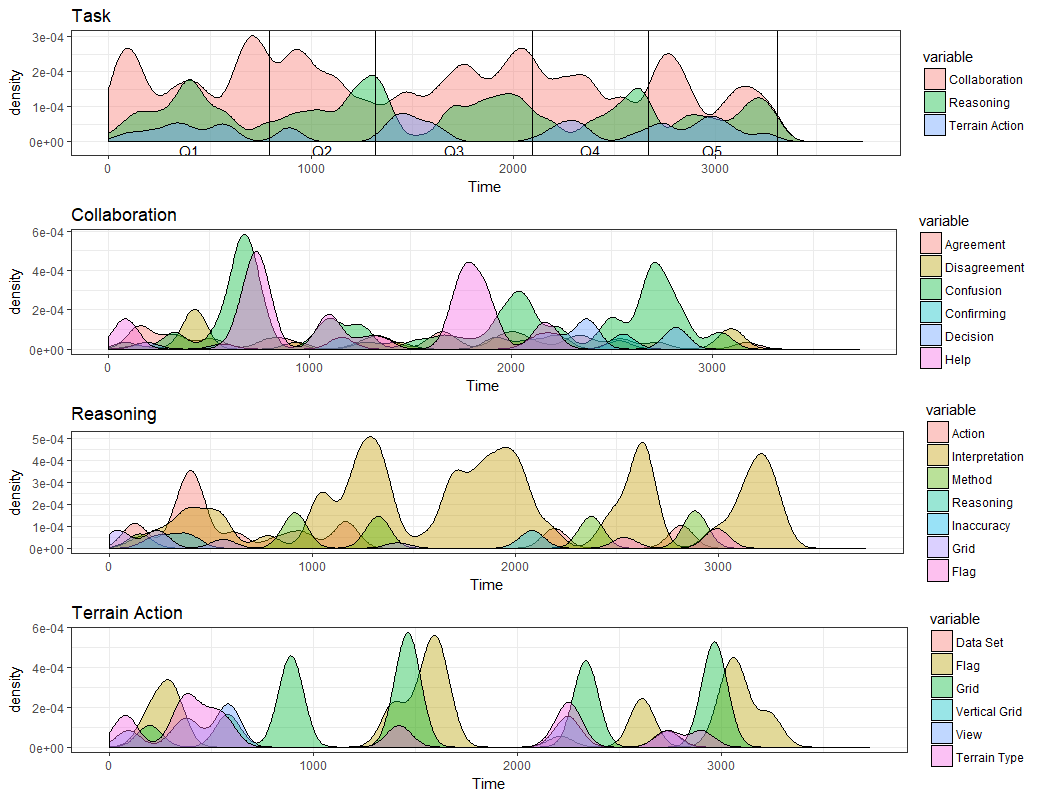
Figure. Analysis of multi-participant collaboration using reduced shapelets in multivariate times series (Click image)
- Project: A Framework for Business Intelligence Driven Organisations: A Sensemaking and Legitimacy Approach
- Funding: Institute of Chartered Accountants in Australia
- Role: Chief Investigator, Researcher
- Collaborators: Jacob Cybulski, Luckmika Perera (AEF), Yee Ling Boo, Morteza Namvar and Nadav Rayman (BizData)
- Location: Deakin University
- Description:
The main aim of this study is to explore distinct conceptual frameworks from related fields of IS and Accounting and to combine these frameworks in an overarching theoretical paradigm explaining Business Intelligence Systems driven management decision making processes in a modern technology-intensive business environment.
- Outcomes:
- Morteza Namvar, Jacob L. Cybulski, Cynthia Su Chen Phang, Yaw Seng Ee and Kevin Tee Liang Tan (2018): "Simplifying Sensemaking: Concept, Process, Strengths, Shortcomings, and Ways Forward for Information Systems in Contemporary Business Environments." AJIS Australian Journal of Information Systems. 22. (Abstract)
- Morteza Namvar, Jacob Cybulski and Luckmika Perera (2016): "Using business intelligence to support the process of organizational sensemaking." Communications of the Association for Information Systems. 38(1), Paper 20. (Abstract)
- Morteza Namvar and Jacob L. Cybulski (2014): "BI-based organizations: A sensemaking perspective," In Proc. International Conference on Information Systems (ICIS 2014) New Zealand, Auckland. (Abstract)
- Project: Building academic staff capacity for using eSimulations in professional education for experience transfer
- Funding: Australian Learning and Teaching Council (ALTC) Competitive Grant CG8-771
- Role: Project Co-Leader (with Stephen Segrave)
- Project Manager: Judy Munro
- Collaborators Deakin: Jacob Cybulski, Stephen Segrave, Dale Holt, David O'Brien
- Collaborators RMIT: Ross Smith, Brian Corbitt, Martin Dick, Ian Searle, Hossain Zadeh, Pradip Sarkar
- Collaborators CSU: Mike Keppel, Deb Murdoch, Ben Bradley
- Tasks: Research, Development of eSims, Knowledge Dissemination
- Size: 13 researchers, developers and educators
- Location: Deakin University, RMIT and Charles Sturt University (CSU)
- Description:
This project aimed to transfer knowledge and build organisational capacity to develop, deliver and evaluate digital simulations (eSimulations) to enhance professional learning in the Australian higher education sector.
Knowledge was initially transferred from the lead institution, Deakin University, to the partner universities, RMIT University and Charles Sturt University (CSU), to achieve this aim. The project revealed both the potential and limits of knowledge transfer to build organisational capacity in the partner institutions. Over time knowledge was in turn transferred from the partner universities to the lead institution. The project’s action research and action learning approach led to the creation of the eSimulations Original Capacity Building Framework.
Knowledge transfer and organisational capacity building is a multi-dimensional, complex process. It requires well articulated strategic and operational leadership, well developed capacities in teaching/learning design, IT infrastructure, media technology production, and discipline/professional expertise, all well aligned to create synergistic value. Leadership must balance the need to nurture such innovation gradually to maturity against the everpresent temptation to accelerate mainstreaming of developments to achieve economies of scale. The former serves well the interests of academic teachers and support staff who generate the developmental momentum; the latter can quickly disempower them and be counter-productive to institutional interests.
These capacities were nurtured in the project through the development of a broader range of eSimulations relevant to the local contexts of partner institutions. The diffusion process was therefore judged a success with different eSimulations developed in the different organisational settings. Each organisational context now has capacities to allow ongoing development and usage of the technology. The limits of diffusion were also revealed with lead institution knowledge only able to be transferred so far in other partner contexts before major local adaptations were required.
- Outcomes:
- Edited Book - Dale Holt, Stephen Segrave and Jacob L. Cybulski (Editors, 2012), Professional Education Using e-Simulations: Benefits of Blended Learning Design, IGI Global Publishing. (Details)
- Project Report - Jacob Cybulski, Dale Holt, Stephen Segrave, David O´Brien, Judy Munro, Brian Corbitt, Ross Smith, Martin Dick, Ian Searle, Hossein Zadeh, Pradipta Sarkar, Mike Keppell, Deb Murdoch and Ben Bradley (2010): "Building academic staff capacity for using eSimulations in professional education for experience transfer" Final Report, Resource Library, Australian Learning and Teaching Council, Australia. (PDF), Resource Guide (PDF).
- Several seminars, e.g. Jacob Cybulski, "Using eSims in Teaching", Deakin University, School of Information Systems, Burwood. (PDF)
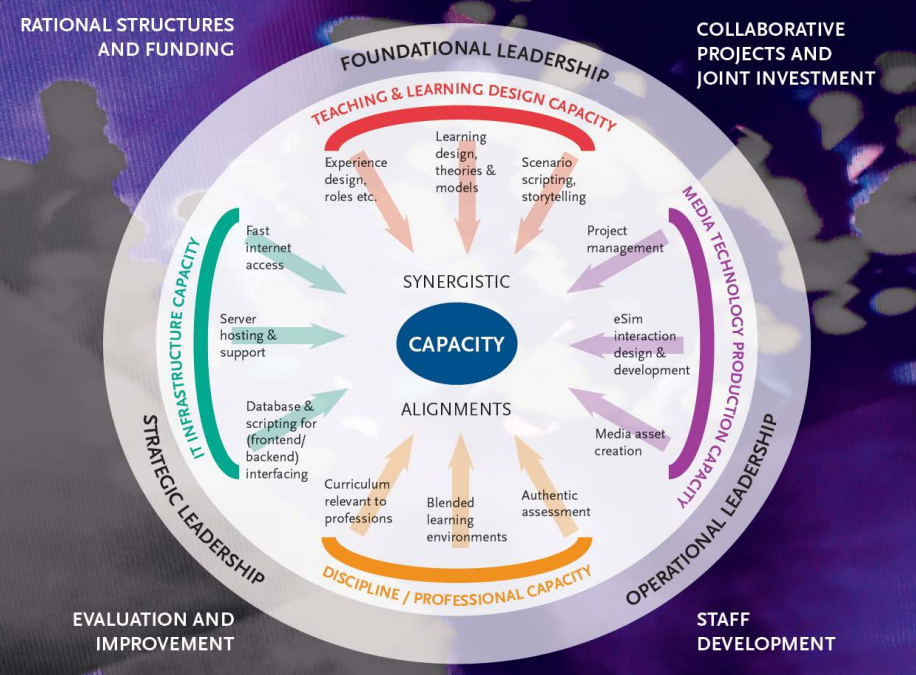
Figure. Poster - Strategy for developing staff capacity for using eSims (Click image)
Other Notable Projects
Refer to publication and presentation lists for their outcomes
- Project: Capturing Experience and Creative Legacy of Contemporary Australian Artists in Virtual Space
- Funding: Deakin, Faculty of Business and Law
- Role: Chief Investigator, Researcher
- Collaborators: Victorian Artists
- Researchers: David Wilde, Merete Crofts, Konrad Cybulski, Daniel Miltinan
- Location: Deakin University
- Description:
The aim of this project was to explore how traditional art forms could be presented online to effectively convey artistic intention, emotion and life experiences.
The study was conducted with a number of Australian painters and sculptors, who collaborated in the creation of metaphors for art installations that would present artists and their work in a novel, engaging and immersive way, thus offering satisfying experience to online viewers.
The following Victorian artists participaed in the project: Geoff Cook (Illustrator), Ron Greenaway (Painter), John Howley (Fantastic realist), Wendy Kelly (Abstractionist), Angie Morgan (Realist painter and archaeologist), Dana Michalska (Expressionist painter), Colin Shingleton (Painter and philosopher), Felix Tuszynski (Expressionist painter), Deirdre Walsh (Sculptor and painter).
During interviews the artists were asked how they envisaged their art to be experienced in the future. We collected their responses which formed some of the most intriguing stories of the ways art could be exhibited in the future, e.g. that sculptures could be relieved of their weight, float in the air and be touched by people virtually, that you could "walk into" oil paintings which could then be viewed from within and without, that virtual galleries would be lit by the sun and the moonlight to bring exhibited pictures to life, an artist could observe facial expression of their artworks viewers, etc. As their researchers and biographers, we saw our responsibility to turn those dreams into reality, which resulted in several virtual installations of their work.
- Outcomes:
- Online Pineberry Gallery of artwork by participating artists. That gallery was destroyed by hacking activity and could not be repaired due to aging software used at that time. A much smaller (Aristoberry Gallery) has been recreated since.
- Several interactive art installations have been created to create the artists' vision of the future interaction with their art.
- Seversal presentations, e.g. Jacob Cybulski, "In the Pursuit of First Person Experience Online: Creating a Web of Interaction, Engagement and Emotion", Deakin University, School of Information Systems, Burwood. (PDF)

Figure. Virtual gallery of light, where visitors could walk around, exploring different artworks,
while experiencing a two minute day and night, with changing light conditions (Click image)
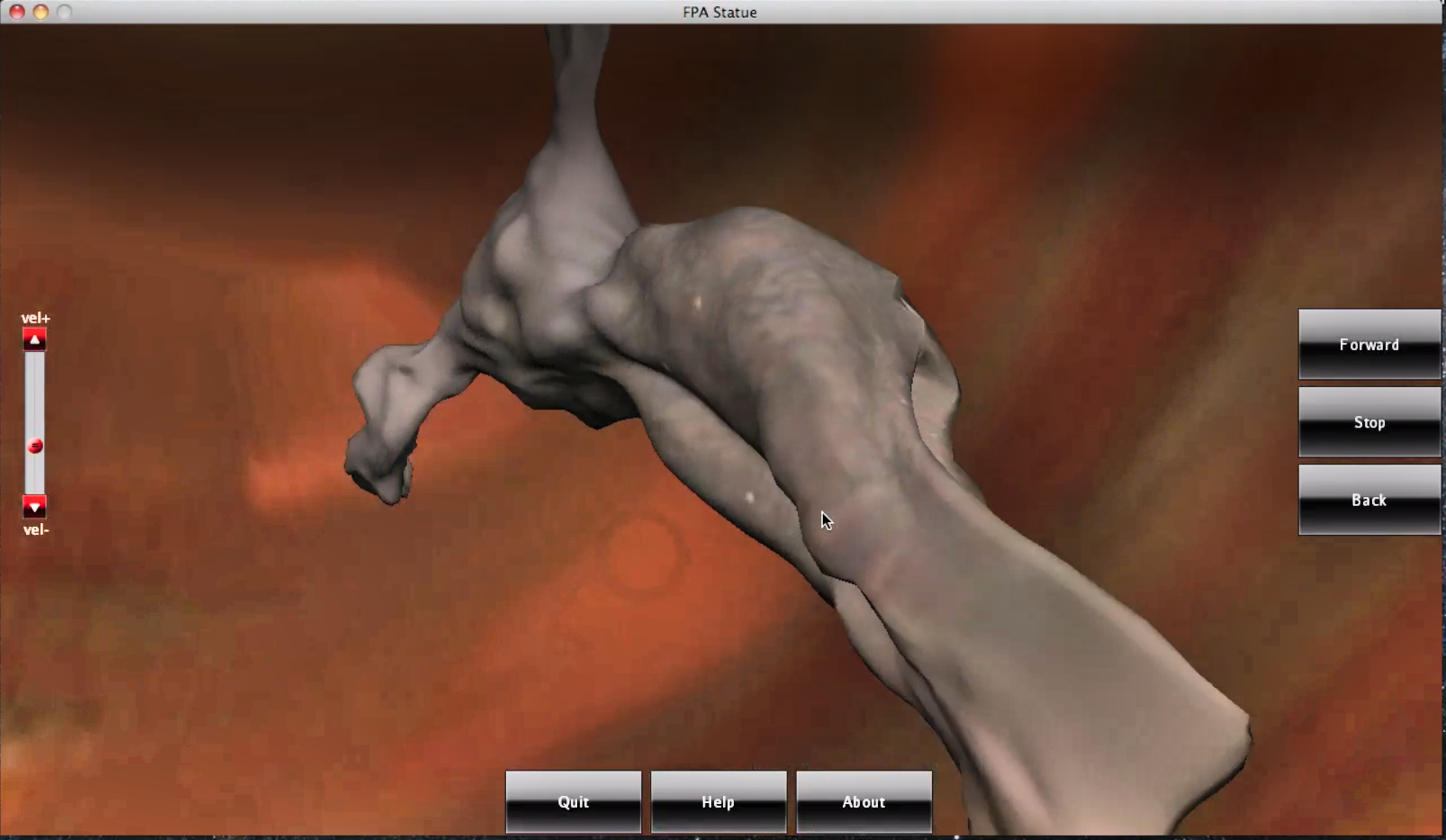
Figure. A sculpture floating in the air that could be touched and interacted with (Click image)

Figure. A painting that surrounds us, within and without (Click image)
- Project: Business / IT Alignment in Australian Enterprise
- Funding: Deakin, Faculty of Business and Law
- Role: Chief Investigator, Researcher
- Collaborators: Jacob Cybulski, Stas Lukaitis, Jenny Price, Belinda Moloney, Pradip Sarkar, Lemai Nguyen (CI), Luba Torlina (CI)
- Location: Deakin University
- Description:
This project aims at developing a cohesive framework of inter-related components, which focus on the issue of effective alignment between IT and business objectives and processes (as set by business strategy), as exemplified in e-Business systems.
The framework postulates that IT solutions could be flexibly aligned with business strategy by evolving both IT requirements and business processes to close the alignment gaps, which commonly cause stakeholder concerns and possible conflict.
As revealed by the on-going research, the issue of successful IT alignment is of critical concern to modern enterprise!
- Outcomes:
- Belinda Moloney, Jacob L. Cybulski and Lemai Nguyen (2008): "Value perception in music information systems", in Annette Mills & Sid Huff (eds), Proc. of the Australasian Conference on Information Systems, ACIS´2008, University of Canterbury, New Zealand. (PDF)
- Price J, Cybulski J (2007): "The Influence of Neo-Tribalism on Participatory Design". Proc. of the Fifteenth European Conference on Information Systems, ECIS´2007 (Osterle H, Schelp J, Winter R eds.), pp 795-806, University of St. Gallen, St. Gallen, Switzerland. (PDF)
- Jenny Price and Jacob L. Cybulski (2005): "Consensus Making in Requirements Negotiation: The Communication Perspective" Australasian Journal of Information Systems, 13(1), pp 209-224. (PDF)
- Stas Lukaitis and Jacob L. Cybulski (2005): "The Role of Stakeholder Understanding in Aligning IT with Business Objectives", Proc. 1st International Workshop on Requirements Engineering for Business Need and IT Alignment REBNITA´2005, Paris, France, 29-30 August. (PDF)
- Jacob L. Cybulski and Stas Lukaitis (2005): "The Impact of Communications and Understanding on the Success of Business / IT Alignment", in Proc. Australasian Conference on Information Systems ACIS´2005, Manly, Sydney, Australia, 30 November-2 December. (PDF)
- Pradip K. Sarkar and Jacob L. Cybulski (2002): "Aligning System Requirements with Stakeholder Concerns: Use of Case Studies and Patterns to Capture Domain Experience", Proc. Seventh Australian Workshop on Requirements Engineering, AWRE´2002, Melbourne, Australia, 2-3 December 2002. (PDF)
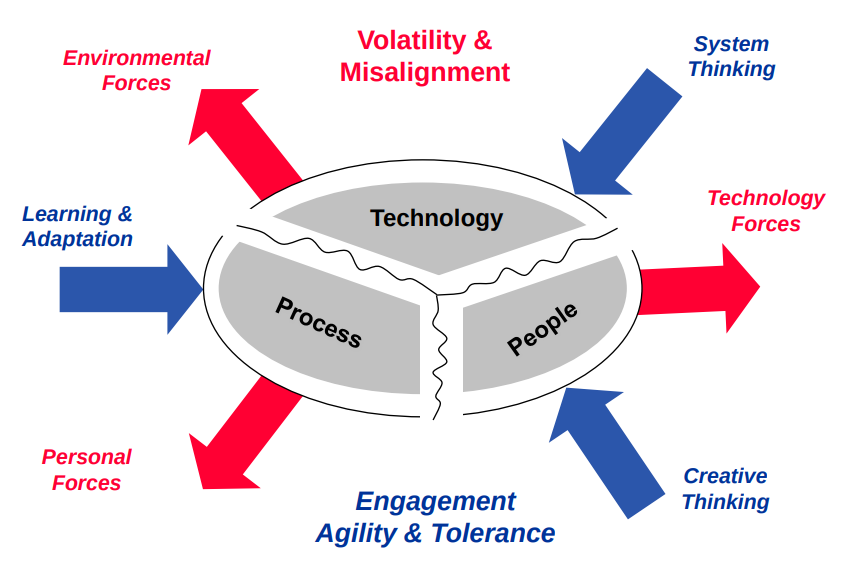
Figure. The forces of business / IT alignment (Click image)
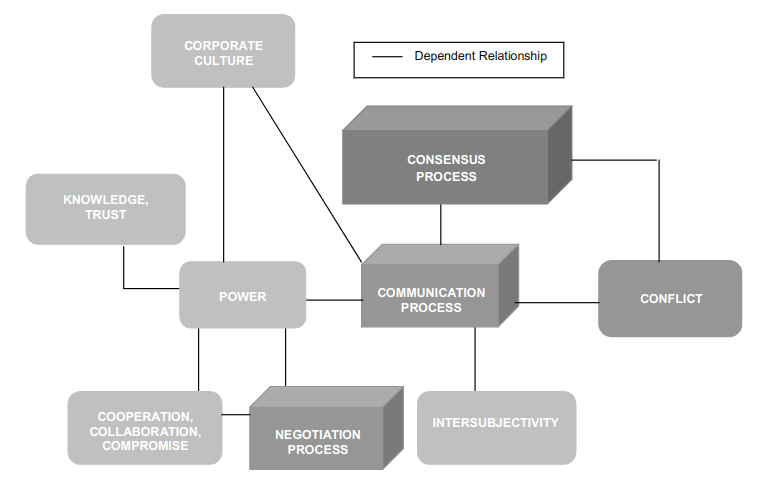
Figure. The communication perspective of concensus making in requirements engineering (Click image)
- Project: Creativity in Requirements Engineering
- Role: Chief Investigator, Researcher
- Collaborators: Jacob Cybulski, Dr Lemai Nguyen (Deakin - CI), Dr Theerasak Thanasankit (Independent), Assoc. Prof. Sharman Lichtenstein (Deakin)
- Tasks: Research
- Size: 4 researchers + 1 student + industry participants
- Location: Deakin University
- Methods: Case Studies, Focus Groups, Repertory Grids
- Description:
When building information systems, developers try to reuse well-known and proven system specifications, designs and algorithms, which improves the efficiency of most typical development tasks.
However, to be effective in a global market place, modern information systems, such as web applications or an e-business systems, need to be distinctive in their function, quality and usability. This demands creative approaches to systems development, from the earliest stages of the system conception, through its design, down to its coding and installation.
Requirements engineering is well-recognised as a creative problem solving activity by the systems development community. However, while substantial research has been conducted and knowledge gained about creativity in the general psychology of problem solving, creativity as it applies to RE remains a relatively unexplored area - one that has neither been comprehensively studied, nor highly recognised, as a research topic of importance.
Our research group focuses on identifying development methods that help systems analysts and users collaborate in the creative process. We are studing processes that promote creativity in individuals and processes that facilitate creativity emerging in groups. This research will result in setting requirements for information systems that are regarded as unique, novel and ultimately useful to their potential users in the competitive market place.
- Outcomes:
- Nguyen, L. and Cybulski, J. (2008): "Into the Future: Inspiring and Stimulating Users´ Creativity", in Wayne Juang & Hock Hai Teo (eds), Proc. of the 12th Pacific Asia Conference on Information Systems, PACIS´2008, Hong Kong, China. (PDF)
- Shaun Dallman, Lemai Nguyen, John Lamp, and Jacob Cybulski (2005): "Contextual Factors which Influence Creativity in Requirements Engineering", Proceedings of 13th European Conference on Information Systems ECIS´2005, 26-28 May, Regensburg, Germany. (PDF)
- Belinda Moloney, Jacob Cybulski and Lemai Nguyen (2004): "Investigating Factors Influencing the Perception of Creativity in Web Design", Proc. The Eighth Pacific-Asia Conference on Information Systems PACIS´2004, Shanghai, China, 8-11 July 2004. (PDF)
- Jacob L. Cybulski, Lemai Nguyen, Theerasak Thanasankit and Sharman Lichtenstein (2003): "Understanding Problem Solving in Requirements Engineering: Debating Creativity with IS Practitioners", Proc. of the Seventh Pacific Asia Conference on Information Systems, PACIS 2003 (Editors: Jo Hanisch, Don Falconer, Sam Horrocks, Mathew Hillier), Adelaide, Australia, 11 July 2003, p 465 - 482. (PDF)
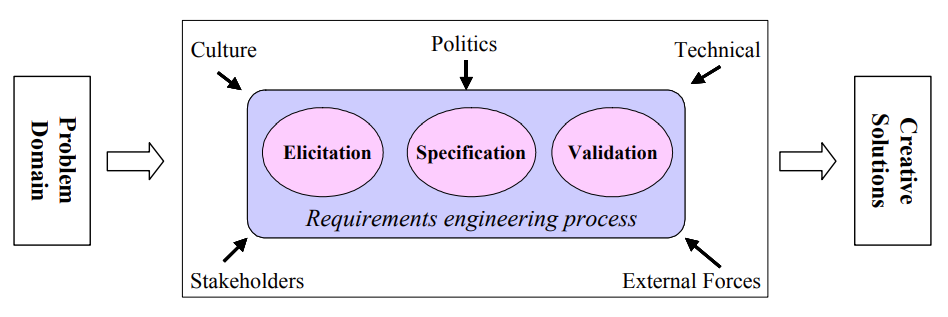
Figure. Socio-organisational aspects of creativity (Click image)
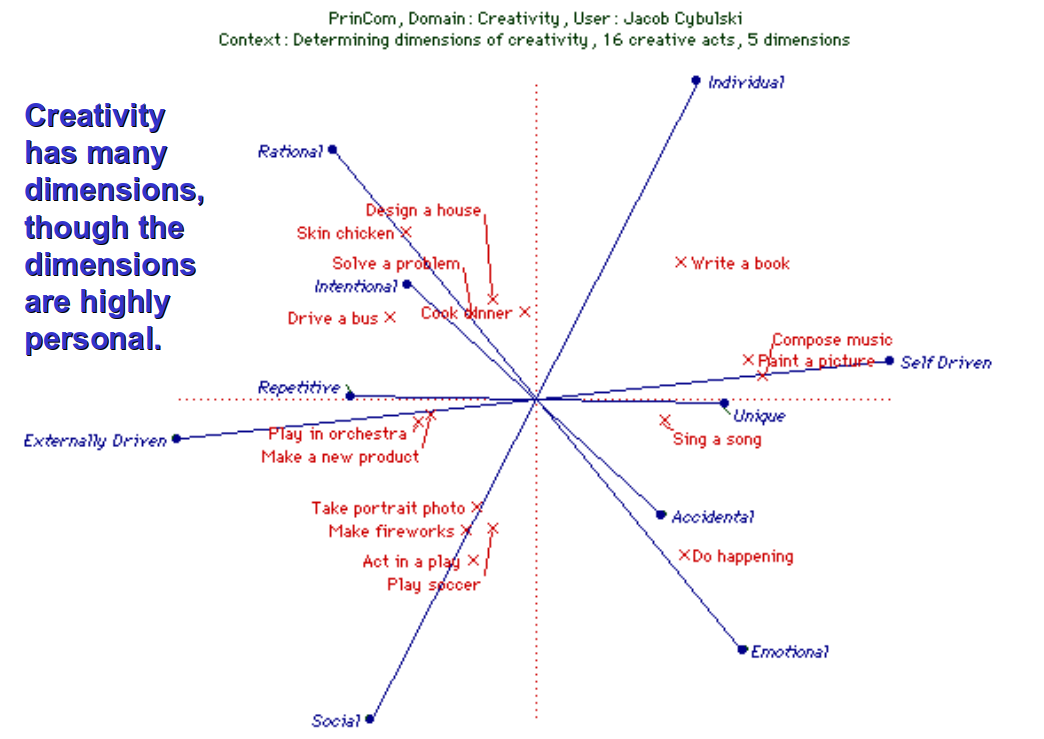
Figure. Repertory grid analysis of activities classified as on the creativity scale within a specific worldview
of creativity dimensions (Click image)

Figure. Repertory grid analysis of activities classified as creative and not creative from
a different vantage point (Click image)
- Project: Experiential Learning Through Simulations: Enhancing education in the professions through interactive computer simulations online
- Funding: Deakin, Strategic Teaching and Learning Grant
- Role: Project Co-Director, Technology Adviser, Scenario Creator
- Collaborators: Jacob Cybulski, Stephen Segrave, Graeme McNolty, David O'Brien and Peter Lane (Learning Services), Julie Cassidy (Law), Boris Crassini (Psychology), Kristin Demetrious (Communication & Creative Arts)
- Tasks: Research, Prototyping, Development of IS Scenarios
- Size: 7 researchers and developers
- Location: Deakin University
- Description:
This project enhances e-learning experiences of students in professional education programs both on campus and at a distance.
Several faculties (B&L, Arts, H&BS) and Learning Services collaborate on developing the simulation environment and creating educational scenarios in four professions: Law, Psychology, Information Systems and Public Relations.
A shared purpose is to engage students in simulated interactions with clients and other sources of information and experience ambiguity and distractions in realistic professional settings. To make judgements, students must use heuristics when seeking information and deal with legal, ethical, administrative and other professional challenges that are integrated in the scenarios.
- Outcomes:
- Creation of the institutional infrastructure for the creation of eSims
- Several e-simulations, seminars and publications across the participating faculties
